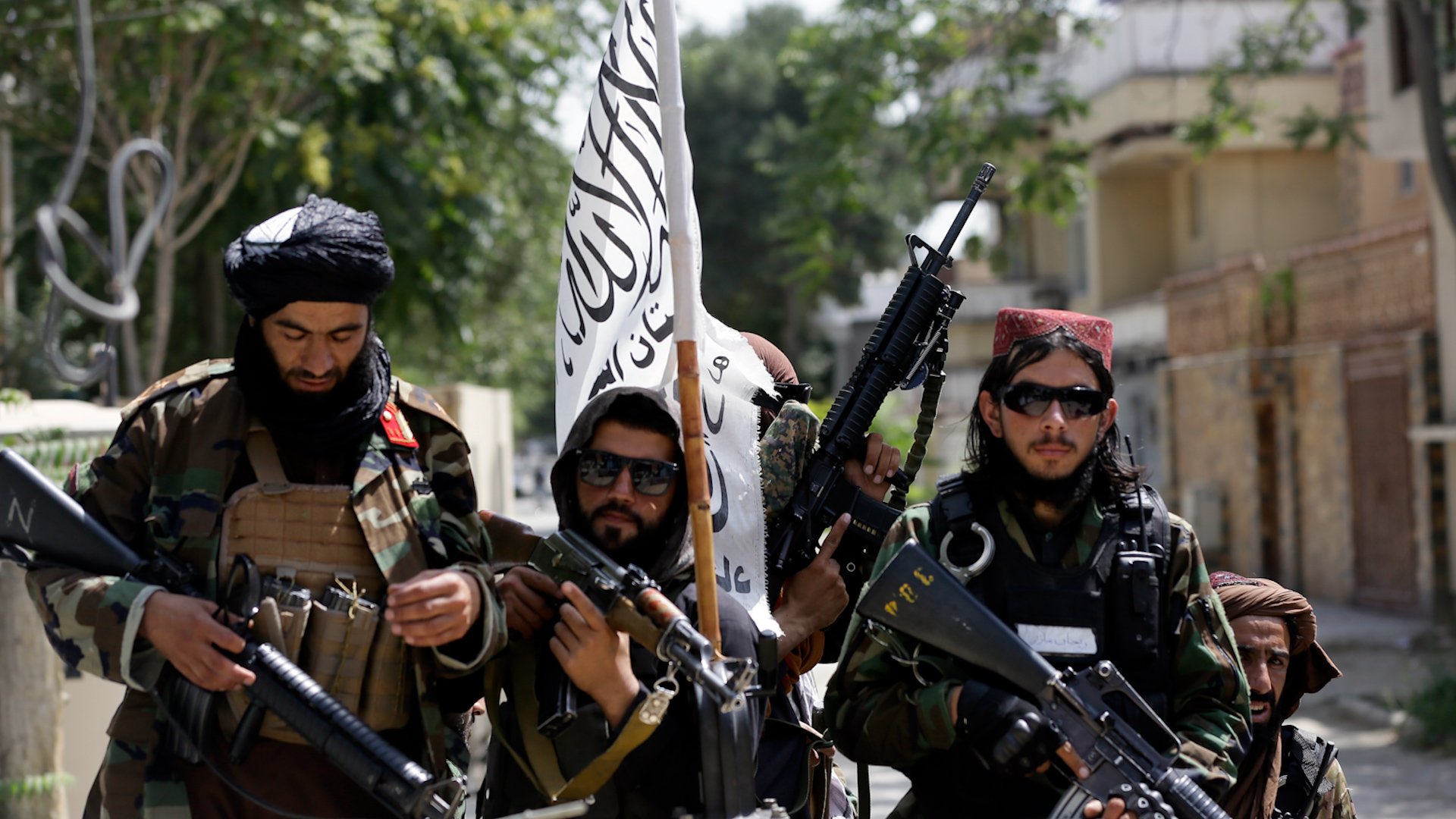U.S. intelligence analysts predicted it would take a couple of weeks for the Taliban to take control of Afghanistan, but instead it took a couple of days.
After U.S. troops began withdrawing from the country in July, the Taliban quickly gained ground, taking key cities with little resistance.
On August 15, Afghan President Ashraf Ghani fled as Taliban fighters took over the nation's capital.
The U.S. government is working frantically to evacuate government officials, citizens and refugees.
Roughly two decades after the U.S. invasion of the country, thousands in Afghanistan and around the world are waiting to see what happens next and questioning how the country got to this point.

The Taliban first emerged in 1994 in the aftermath of the Soviet Union invasion.
After the Soviet Union was driven out by factions of Islamic fighters known as the mujahideen, the group fell apart and Afghanistan entered a civil war.
By promising to make Islamic values a priority and to fight the corruption that led to the civil war, the Taliban quickly grew and took over.
By 1996, the Taliban declared itself an Islamic Emirate of the nation and ruled over Afghanistan until 2001.
The Taliban enforced a strict interpretation of the Quran.
Women and girls were denied the opportunity to work or get an education. They also had to be fully covered and couldn't leave home without a male escort.
Television, music and movies were also banned and punishments for disobeying their rules included amputations, executions and public beatings.
Under Taliban rule, they attempted to gain international legitimacy but were not accepted by the global community because of accused human rights violations.
But after the September 11, 2001 attacks on the World Trade Center, the Taliban gained the attention of the U.S. and the world.
They were accused of harboring al-Qaeda and the mastermind behind the attacks, Osama Bin Laden.
In October 2001, a U.S.-led military coalition launched attacks in Afghanistan and by December, the Taliban collapsed.
Bin Laden and Taliban senior officials evaded capture.
It is believed many Taliban leaders went to Pakistan and guided the group from afar.
The U.S. remained in Afghanistan for nearly two decades working with the Afghan government and military, providing weapons, funding, aid, training and other resources.
More than 6,000 Americans and 10,000 Afghans died during the war.
The U.S. also spent more than $2 trillion while fighting in the country.
In 2018, the Taliban and U.S. government entered talks for a peace deal and in 2020, the deal was signed under U.S. President Donald Trump. The deal stated the U.S. would withdrawal from Afghanistan and the Taliban would prevent attacks on U.S. forces.
President Biden has honored that deal, promising to end U.S. presence in the country by September 11.
Despite all the resources, funding and training, the Taliban still gained power much quicker than anticipated.
"This is an intelligence failure of the highest order," Bill Roggio, a senior fellow at the Foundation for Defense of Democracies told CNBC.
The Taliban started their rapid ascend by taking over rural areas and then infiltrating cities by targeting key people and families, reports CNBC.
Many surrendered because they lacked confidence in Kabul’s authority, says Jack Watling, a research fellow for land warfare and military sciences at the Royal United Services Institute in London.
"The speed is not a reflection of military capability, it is a reflection of a collapse in will to fight," he says.
And when the U.S. said they would continue with a full withdrawal from Afghanistan, "that sent a signal to Afghan soldiers and police that the end was near, and converted chronically poor motivation into acute collapse as nobody wanted to be the last man standing after the others gave up," said Stephen Biddle, professor of international and public affairs at Columbia University to CNBC.
Some experts think, even if Afghan forces would have fought back, the Taliban still would have taken over.
The Taliban has changed their strategies since they were last in power, using social media and modern technology to their advantage for recruitment, sharing information, and ruling its controlled areas.
Experts also say the Afghan National Army is systematically corrupt, disorganized and dysfunctional.
Military members are "underpaid, underfed and under-compensated by the leadership in Kabul," according to CNBC.
As some call the Taliban's takeover of Afghanistan a failure and blame the botched U.S. withdrawal, the U.S. blames the Afghan government and many experts agree the reasons behind these events are complicated.
Some say the U.S.'s inability to fully understand Afghanistan's history and culture and willingness to impose Western values, also played a role in the rise of the Taliban despite efforts to eliminate the group.
"We think everybody wants what we have. It's cultural obtuseness, obliviousness to their reality and their lived experience," says Michael Zacchea, a retired U.S. Marine who led an American-trained Iraqi Army battalion during the Iraq War.
Recent events in Afghanistan have led many to question not just the U.S. troop withdrawal but the nation's overall war strategy.
U.S. President Biden remains firm in his decision to withdrawal and says the nation will continue to support the Afghan people.
Check out The China Report, our new weekly newsletter. Subscribe here!

